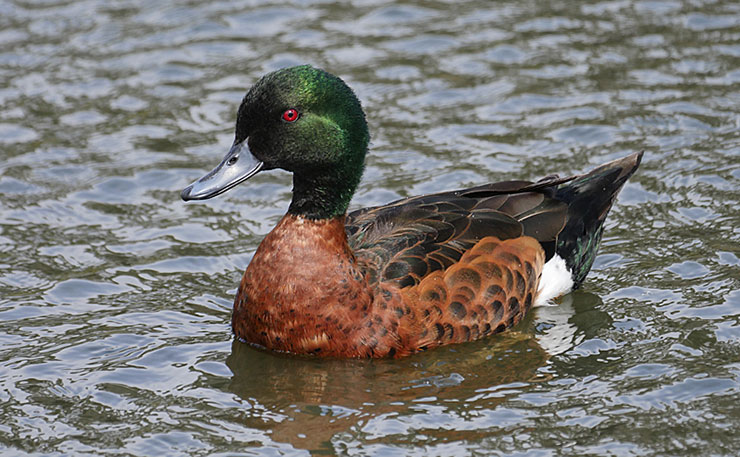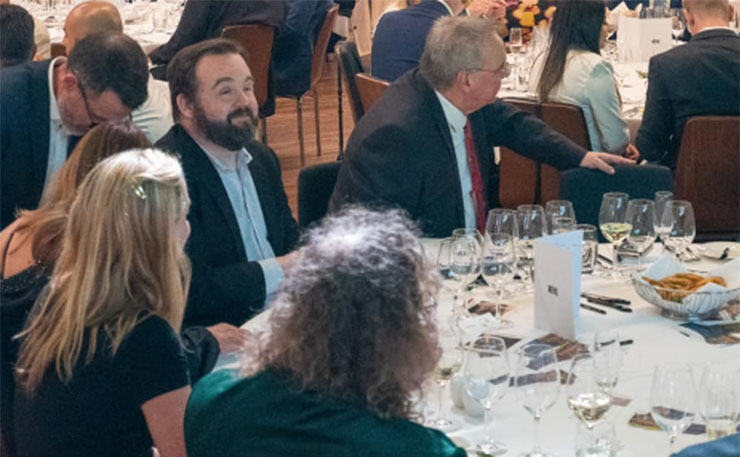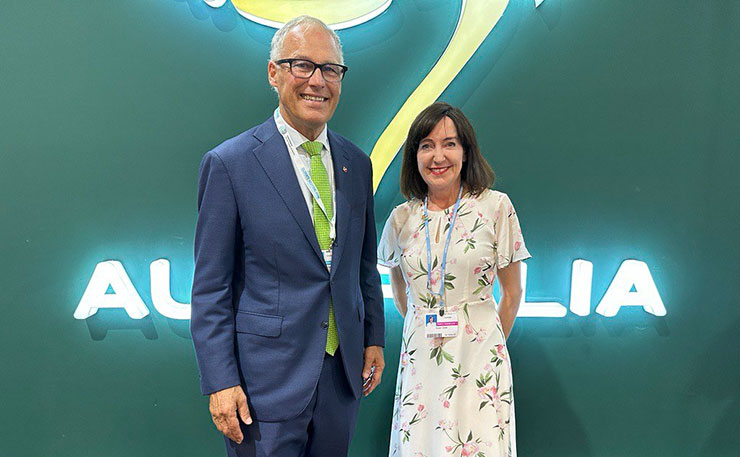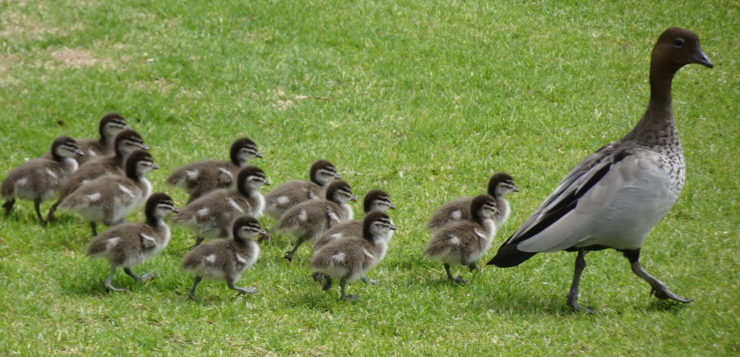Every March, Geoff Russell and his friends from South Aussies for Animals (SAFA) head into the game reserves in South Australia to document the official opening of the duck hunting season. You know, like the government is supposed to do, but pretty clearly doesn’t. And a warning to readers: if you find animal cruelty upsetting, then this story contains themes and footage you’re highly unlikely to enjoy.
Watching duck shooters at Lake George on the first day of SA’s 2024 duck and quail killing season isn’t for the faint-hearted. But it does it teach you plenty about our political leaders.
Koalas have fur and seem to be sacred. When footage emerged of them smashing to the ground from trees, the action was immediate, and useful. Our native feathered wildlife are treated rather differently.
It isn’t hard to get horrific footage of ducks smashing to the water from a considerable height with broken bones and punctured organs, but the action that ensues from that is missing.
The horror has been normalised and politicians cave to imaginary threats from the less than one in 1,000 South Australian voters who are out of sync with the 95 per cent of the public, who think it important that animals targetted for food are killed quickly, and painlessly.
Lake George, South Australia, Saturday March 16, 2024
I watch as the woman’s face opposite me cringes in something between empathic pain and shock. Her entire body jerks back involuntarily at the same time. It’s the second time in a matter of minutes that I’ve seen this response. A few minutes earlier it was me making it.
“Watch this”, I’d urged, “but be prepared, it’s horrible”.
It’s not a suggestion I’d make to many people, but I knew both of these women had seen worse, and not just on a screen, but for real. So I watched them, and they watched the screen. Before them was footage of probably 90 kilograms of camo-clad Australian (presumably) manhood. Also presumably.
He was battling a 400-gram duck.
He’d already disabled it with at least one shot and was moving in for the kill. He was holding one of the world’s most inefficient and unreliable killing weapons; a shotgun. He walks to about seven metres from his prey. In the dull light, it could be either a grey or chestnut Teal. Either way, it’s mostly just bones and feathers. He takes careful aim. He is so close that the spread of the 200 or so pellets will be quite small. This isn’t a “tap it in” golf putt, but something still requiring careful attention.
The pellets leave the shotgun at about 500 metres per second and produce an explosion of bird and water. At that range, all the pellets hitting the bird smash bones and organs and emerge into the water on the other side of the body. He picks up the small limp figure. He knows he’s being filmed and displays his 400-gram trophy in a kind of “screw you” triumph.
This unequal contest is as legal as it is shocking. Given the number of other shooters observed on the same morning (and later in the evening) not bothering to kill the injured birds they retrieved, this particular shooter should probably be commended.
At least he killed it.
The choking men
When shooters pick up a wounded duck, some hold them by a foot or leg, but others lock a finger around the neck with the skull in the palm of their hand. They can hold three or more ducks that way.
Anybody who understands the way execution by hanging works knows that it is the drop which does the damage, the dislocation of the neck. If the drop is too small, the victim chokes over the next few minutes, depending on the precise placement of the noose. So it is with a duck in this choke grip.
We filmed one shooter who fired a shot into a duck on the water and then picked it up with the choke grip; which is absolutely fine if the duck is dead.
It wasn’t.
Some 40 seconds later, he moved the now inert and lifeless looking duck from his right hand to his left hand. As his grip relaxed, what had appeared to be a dead duck suddenly started flapping. It was to no avail, a left-hand finger soon took over the choking role and the duck’s future was sealed. The apparent brutality of the close-range shotgun blast is nothing compared to actual brutality of choking the life out of a helpless animal.
The family that slays together stays together
Another pair of shooters, a father-son combo, were filmed shooting into a flock of six ducks sitting on the water. This is against the Code of Practice which duck shooters are legally obliged to follow. It’s impossible to say confidently how many were hit, but the spray as the pellets hit the water provided some evidence that it may well have been all of them.
They appeared to be in a nice straight line and three “jumped” into the air in a frantic and successful effort to escape. Those three quite likely had one or more pellet wounds. Shotgun pellets only kill when they hit vital organs like the heart, lungs, brain or wing bones. You can aim the blast of pellets, but it’s purely a matter of chance how many, if any, of the pellets will hit a vital organ.
A duck with a smashed leg will die later, but can still fly and escape. Ducks with pellets in the guts will die, but can also still fly and escape.
The flying wounded
Violence in films is often more effective if it occurs off-camera. The sounds alone can be more horrifying than visual blood and guts. This is because you are forced to think and imagine more about what is happening when you are shown less. Duck shooting is a little like this. The worst thing that can happen to a duck isn’t being shot from seven metres by some camo-clad wanna-be warrior. It isn’t even being choked to death slowly.
Far worse is the pellet in the guts that doesn’t drop you from the sky. Far worse is the broken legs that will stop you swimming or feeding, and have you die slowly. It’s virtually certain that the father-son combo created just such injuries with their flock shot. But those injured birds will never be filmed or found. They may recover, but will most likely die slowly.

Many flying wounded were created at Lake George last weekend.
The flying wounded were systematically ignored by the recent South Australian Select Committee Inquiry. But then again, the Committee wasn’t much into evidence, preferring instead to just listen to shooter claims rather than engage with the substantial and gruesome body of actual scientific evidence about shotguns and how they work.
Such incompetence was perplexing, until pictures emerged of several of the Committee at a slap-up dinner put on by duck shooters.
Lies and regulation
If shooters and their political mates have their way, there will be talk of more regulations and the Government will continue to claim, as it has for years, that shooting is well regulated. This is a display of either ignorance or deliberate mendacity.
Wounding during duck shooting is a result of the physics of shotguns. If the Committee hadn’t been incompetent and quantitatively challenged, they’d have realised this from the evidence presented. You can’t fix duck (and quail) shooting or regulate it any more than you can change the value of Pi. But regulation isn’t just impossible, the department isn’t even trying.
Our team of 13 people with six cameras filmed just a few shooters during a day and a half around Lake George last weekend. We just film who we can find. Nevertheless, we filmed multiple people not bothering to kill ducks they retrieved; we filmed small children emulating their fathers by “windmilling” ducks ineffectively by the neck; we filmed a shooter shooting a record four extra shots into a duck he’d disabled with the first pair of shots, yet still the duck was alive when he retrieved it.
We filmed a shooter running and hiding what was most likely a protected species. He’d seen a NPWS ranger vehicle. He needn’t have bothered, he was in the water and they were almost exclusively looking in the other direction. Perhaps the rangers hadn’t had yet completed the PowerPoint training course telling them to look towards the water where the ducks were.
All of us saw NPWS rangers driving around in their Toyotas, not one of us saw a single officer raise binoculars or a camera, after being told they possessed both. The closest anybody saw to them observing shooting was that they “parked with a line of sight to two shooters” for a few minutes.
Perhaps of course, we could be wrong. Perhaps they had a David Attenborough style system of duck lookalike spy-cameras and were remotely monitoring shooters from a central control room.
Department officers gave evidence at the recent Select Committee. Did they have any footage of shooters being monitored? No. Did they have a spreadsheet laying out the time that their staff had spent actually watching shooters? No. At Lake George last weekend, all of our team saw NPWS driving around, none of us saw them doing any actual observation of shooters in the act of shooting.

It’s pretty simple. Every time we put people on the ground with cameras we get footage and breaches of the Code of Practice. Has the Department ever prosecuted a person without evidence from third parties (the groups I’m involved with)? During the Senate Committee hearings Director of Conservation and Wildlife from the Department of Environment and Water didn’t know.
You’d imagine that such an officer fronting up to a Committee on precisely this topic would have bothered to check the facts and know the answers. But no, she mumbled vaguely about a “handful” of “expiations”, provided not a single shred of evidence of the nature and degree of hunter monitoring, and then claimed that hunters were “generally well behaved”.
How do you know if you don’t look?
The most basic principle of empirical science is to observe the phenomena you are studying before shooting your mouth off and making claims. You’d imagine a highly paid public servant with a considerable scientific CV would know better. It seems not.
A challenge to the Malinauskas Government
I challenge the Deputy Premier (and Minister for Environment and Water) Susan Close to order her department to collect up all the SD cards of all the cameras that NPWS claimed to have on the wetlands last weekend. This collection should be done by an independent body who should also check the timestamps of any footage thereon.

The Minister should then publish the number of hours of footage… or minutes, or perhaps it just seconds. Or a big fat zero?
Monitoring isn’t hard, you just have to get out of bed early and point a camera at a shooter. We can’t and don’t film 100 shooters to find a few ‘bad apples’. We just film anybody we can find. NPWS, as far as we know, have never prosecuted anybody without somebody else to do the watching. Their policy seems clearly to be “Don’t look and you won’t have anything unpleasant to do; i.e. your highly paid job.”
Ultimately, nobody can prevent or film the flying wounded, but NPWS don’t even bother with the things than can be monitored and filmed. We don’t know if they, like the Select Committee, also get invitations to dinners from shooters. But it wouldn’t be surprising.
Will the South Australian Malinauskas Government continue sending members of the public who write to them about this issue the same lies about how well regulated duck shooting is?
Maybe. Changing Government behaviour is also like trying to regulate the value of Pi.
• You can find out more about South Aussies for Animals (SAFA) here. And follow them on Facebook here.
Donate To New Matilda
New Matilda is a small, independent media outlet. We survive through reader contributions, and never losing a lawsuit. If you got something from this article, giving something back helps us to continue speaking truth to power. Every little bit counts.




